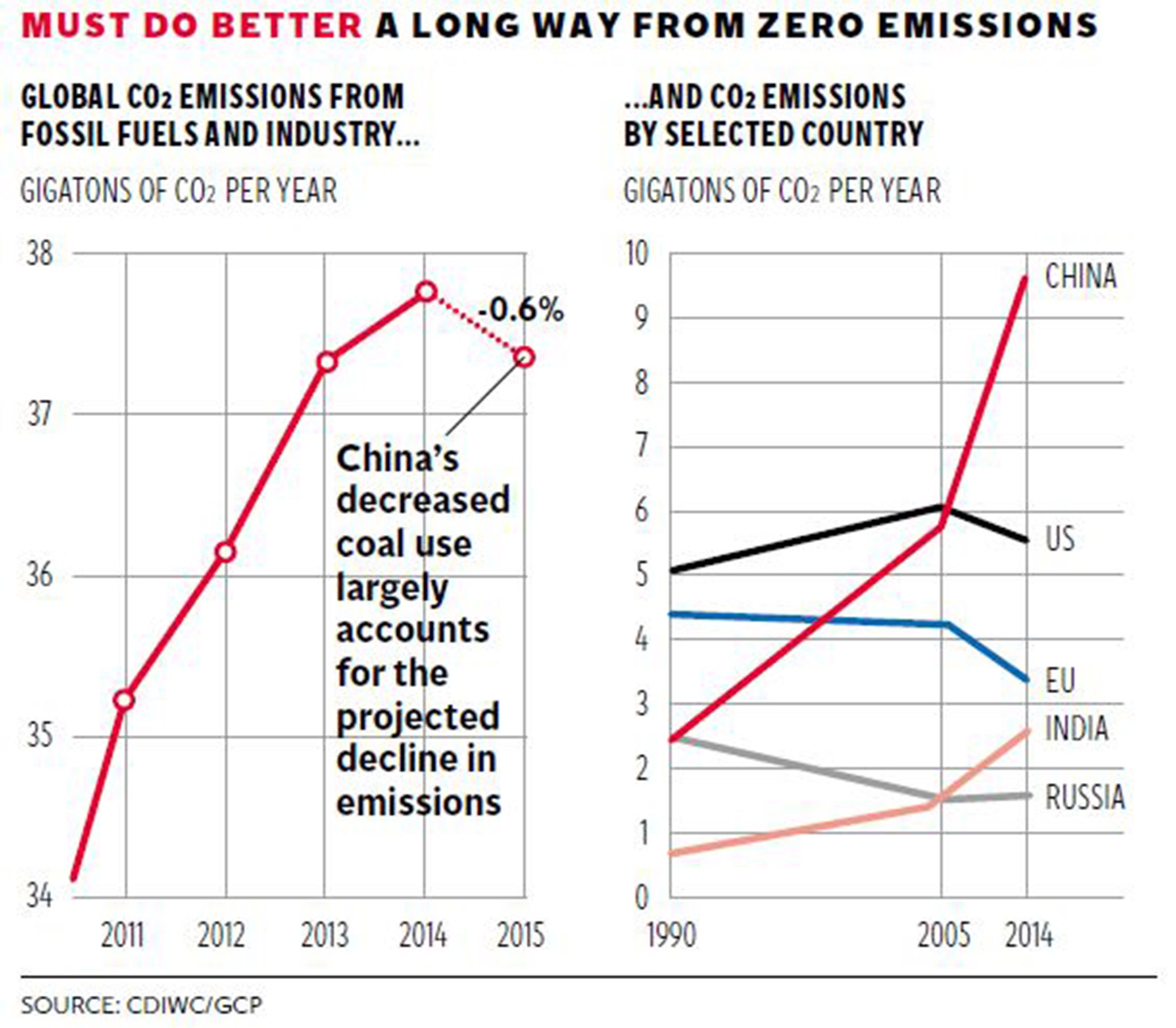Climate change: Global carbon dioxide emissions stall for second year in a row
But scientists warn that this does not mean the world has reached 'peak carbon'

Your support helps us to tell the story
From reproductive rights to climate change to Big Tech, The Independent is on the ground when the story is developing. Whether it's investigating the financials of Elon Musk's pro-Trump PAC or producing our latest documentary, 'The A Word', which shines a light on the American women fighting for reproductive rights, we know how important it is to parse out the facts from the messaging.
At such a critical moment in US history, we need reporters on the ground. Your donation allows us to keep sending journalists to speak to both sides of the story.
The Independent is trusted by Americans across the entire political spectrum. And unlike many other quality news outlets, we choose not to lock Americans out of our reporting and analysis with paywalls. We believe quality journalism should be available to everyone, paid for by those who can afford it.
Your support makes all the difference.Global emissions of carbon dioxide this year have stalled for the second year in a row, but scientists have warned that this does not mean the world has reached “peak carbon” with greenhouse gases set to fall year on year.
Latest figures on fossil-fuel emissions for 2015 show for the first time during a period of global economic growth that the amount of carbon dioxide being pumped into the atmosphere has remained stable for two consecutive years.
Scientists believe however that the unprecedented decline is almost entirely due to the economic slowdown in China, now the world’s single biggest emitter of greenhouse gases, which is likely to see a rapid return to growth in carbon emissions as its energy-hungry economy picks up again.
India and other developing nations are also expected to increase the amount of coal they burn in the coming years. This is likely to feed in to an overall increase in the growth in global carbon emissions globally, making the current slowdown a transitory “blip”, the scientists said.
“With two years of untypical emissions growth, it looks like the trajectory of global emissions might have changed temporarily,” said Professor Corinne Le Quéré, director of the Tyndall Centre at the University of East Anglia, a lead author of the study presented at the Paris conference on climate change.
“It is unlikely that emissions have peaked for good. This is because energy needs for growing economies still rely primarily on coal, and emissions decreases in some industrial countries are still modest at best,” Professor Le Quéré said.
“Global emissions need to decrease to near zero to achieve climate stabilisation. We are still emitting massive amounts of CO2 annually, around 35 billion tonnes from fossil fuels and industry alone. There is still a long way to near zero emissions,” she said.
Carbon emissions for 2014 grew by just 0.6 per cent compared to an average annual increase of between 2 and 3 per cent since 2000, apart from a brief period of decline in 2009, explained by the worldwide economic recession leading to a fall in energy demand.

The latest figures for 2015 indicate that decline in emissions has continued with the amount of carbon being pumped into the atmosphere this year compared to the previous year ranging from a slight rise of 0.5 per cent to a decline of 1.6 per cent.
“It’s encouraging in a way. It’s a bit of fresh air, but I don’t think this is the peak in terms of carbon emissions. We may see a lot of flat growth, depending on China, but India has incredible energy needs and they are growing rapidly,” Professor Le Quéré told The Independent.
“It will be a real possibility that we will see Indian growth picking up and so allowing emissions globally to grow rapidly. India now is where China was in the 1990s. This is why Paris is so critical,” she said.

The emissions figures, published simultaneously in the journals Nature Climate Change and Earth System Science Data, show that China was the biggest CO2 emitter in 2014, releasing some 9.7 billion tonnes. Last year China experienced an increase in emissions growth of 1.2 per cent, compared to an annual growth rate of 6.7 per cent for the previous decade.
The US was the second biggest emitter in 2014, releasing 5.6 billion tonnes, followed by the EU and India with 3.4 billion tonnes and 2.6 billion tonnes respectively.
The UK released 0.43 tonnes of CO2 in 2014, which was 1.2 per cent of the world total, a decrease of 9 per cent on the previous year, and 28 per cent below 1990 levels.
Professor Myles Allen of Oxford University said that global temperatures respond to the accumulation of carbon dioxide in the atmosphere – not the rate of emissions in any given year – nevertheless, the latest figures are encouraging.
“So to stop temperatures rising, net emissions need to be reduced to zero. But for that, emissions need to peak first. So evidence that it is possible to grow the world economy while reducing emissions is of course good news,” Professor Allen said.
“Is this the beginning of the end of global warming? Probably not. But let’s hope it is the end of the beginning,” he said.
Professor David Reay of the University of Edinburgh, said: “There is a long, long way still to go. To stay within the 2C global warming target emissions can't just stall, they need to fall. Whether 2015 is the year we truly turn the corner on global emissions or is just a blip in the upward march towards dangerous climate change now depends on Paris.”
Join our commenting forum
Join thought-provoking conversations, follow other Independent readers and see their replies
Comments